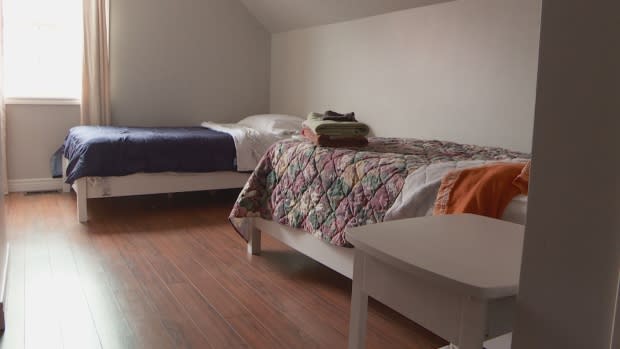36-bed women's shelter in Saskatoon closed, funding shortfalls blamed
More homeless women and their children will have to stay in hotels after a 36-bed women's shelter closed in Saskatoon, according to the executive director of an organization dedicated to reducing homelessness in the city.
Mumford House shut its doors at the end of April after nine years of providing a temporary home for women and children with nowhere else to go.
The Salvation Army, which ran the facility on Avenue T S., has not specified the exact reasons for the closure.
Shaun Dyck, the executive director of the Saskatoon Housing Initiatives Partnership (SHIP), believes funding shortfalls were a major factor.
SHIP is an affordable housing advocacy group and the lead agency working to implement the Saskatoon Homeless Action Plan.
Dyck believes crime in the area of the shelter's Pleasant Hill location, where a group of children were recently filmed attacking a 33-year-old woman in a park, is another reason for the closure.
"That rock throwing incident, that beating incident and gangs and crime," said Dyck.
"I think that that might have something to do with the location maybe not being perceived as a safe place."
In 2016, then Salvation Army executive director Major Malba Holliday told the Saskatoon Starphoenix the location was "a bit high-risk for women and children."
Dyck said last month's closure is likely to lead to more women and their children staying in hotels, an outcome he believes would have lasting impacts on the community.
"We have to look at what accepting shelter nights in hotels is going to do to families, and bouncing children around from room to room with no stability," said Dyck.
"We're going to have inevitable social costs from that. Kids can't — without a safe and stable place to stay, their education is going to suffer."
Mumford House was one of the only places in Saskatoon where women and children could be housed together.
Closure was coming for over a year
In a written statement released last week, the Salvation Army said the decision to close the shelter had been underway for more than a year.
"There are many factors that prevent us from running Mumford House in a manner that meets our standards and led to this action," said the statement.
"We will continue to work with government in order to create a more viable program model that will allow us to collectively realize our shared goals."
The Ministry of Social Services said it has made other arrangements for people who were previously served by Mumford House.

It said it has been monitoring emergency shelter support for women with children.
"In Saskatoon, we've supported just under a dozen women with children who have come to us seeking support to access shelter," said a written statement from the ministry.
"With the help of Ministry staff, the majority accessed housing through the Housing Authority or private landlords.
"Others chose to reside with family or enter a detox program."
Ministry uses hotel rooms as last resort
It said the ministry does put women who need shelter in hotel rooms when no other emergency shelter services are available or appropriate.
It also pays for meals.
"We want to assure anyone in need of emergency shelter that we are here to help, and there continue to be options for emergency shelter and permanent housing in Saskatoon," said the ministry.
Shelters in Saskatchewan are funded through per diems, meaning the shelter receives a flat rate payment for each bed that is filled on any given night.
The ministry said it has increased per diem rates for individuals and families in the past 12 years.
But Dyck said the funding model is problematic and is not keeping up with the shelters' operating costs.
"The cost of doing business changes every year due to inflation and it always seems that the shelters are asked to do more with no change in funding," he said.
Funding review needed: Dyck
Mumford House gave shelter to families but did not make them share a room if there was, for example, a spare bed in a four-person room. Dyck said it did not receive a per diem for those empty beds.
He said the facility was staffed by two workers, 24-hours-a-day, for safety reasons.
Dyck said some other provinces help cover staffing costs to reduce the output required by shelters.
He believes it is time for the province to review the way it funds shelters.
"I would like to see the provincial government take a lead on evaluating what they can do to ensure long-term viability of shelters," said Dyck.
"Not only that — looking at the functions of the shelters as a place to start helping people bring that stability of housing back into their lives."
With files from CBC's Jennifer Quesnel

